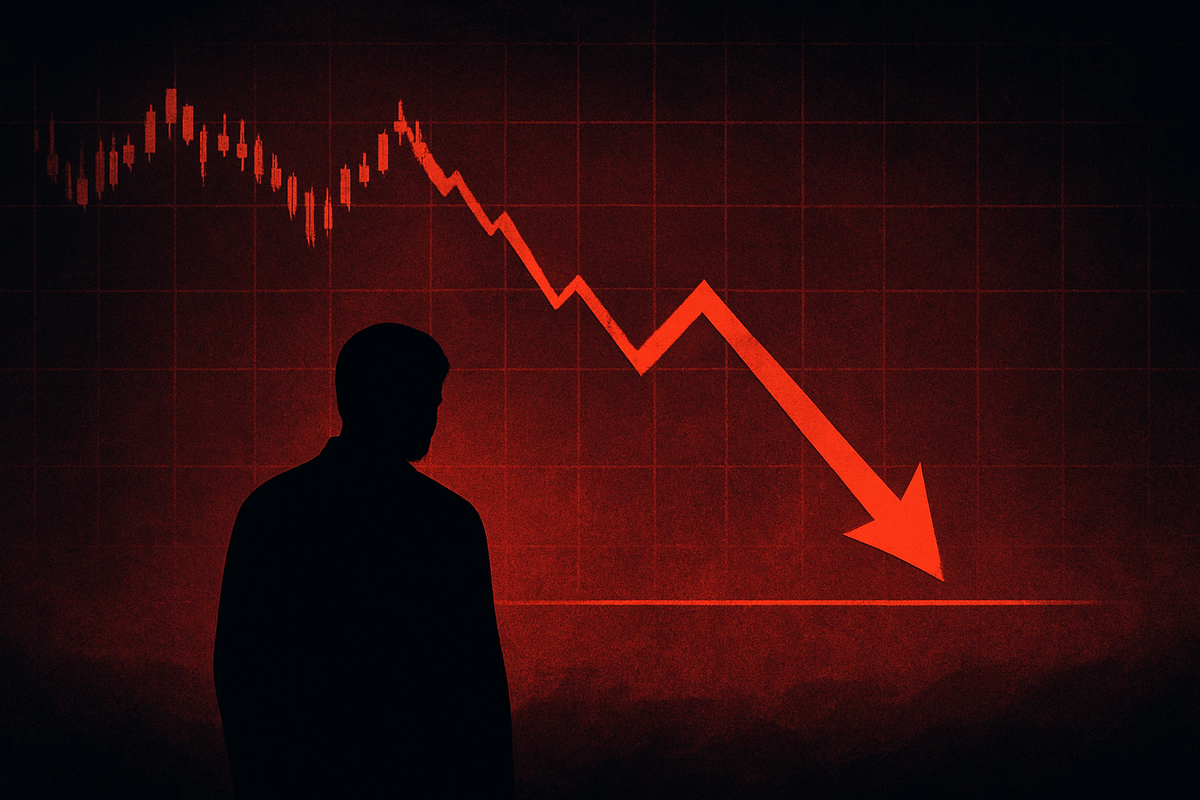
As the calendar turns to late October 2025, a prominent voice in technical analysis, Elliott Wave International (EWI), is issuing a stark warning to investors, highlighting specific chart patterns that suggest the stock market's current bullish momentum may be on the precipice of a significant reversal. This analysis, rooted in the intricate dynamics of Elliott Wave Theory, suggests that while some indices might still experience a final upward thrust, the underlying technical structure points to an impending period of substantial market correction, potentially catching unsuspecting bulls off guard.
The implications of such a downturn are profound, urging a re-evaluation of investment strategies and a heightened sense of caution. EWI's perspective signals that the current market environment, characterized by robust gains in certain sectors, could be the final act of a long-running bull market before a dramatic shift in sentiment and asset values. Investors are advised to scrutinize their portfolios and prepare for increased volatility and potential downside risk in the coming months.
A Deep Dive into the Looming Bearish Signals
Elliott Wave Theory, a method of technical analysis developed by Ralph Nelson Elliott, posits that financial markets move in predictable, recurring patterns driven by collective investor psychology. These patterns manifest as "waves"—motive (impulse) waves that move in the direction of the larger trend and corrective waves that move against it. EWI's current analysis points to the culmination of certain motive waves and the formation of specific corrective structures that traditionally precede significant market downturns.
Specifically, as of late October 2025, EWI analyses suggest that the S&P 500 Index (INDEXSP:.INX) is potentially in the final stages of a strong upward trend, with some targets around 7120. While this might sound bullish, EWI interprets this as a potential "fifth wave" — the last leg of a five-wave advance. Historically, the completion of a five-wave impulse sequence often signals an impending three-wave corrective decline. Furthermore, some EWI analysts have observed an "ending diagonal structure" in the S&P 500 futures (CME:ES=F), a pattern that, if confirmed by a "strong reversal below the wave (4) low," would strongly reinforce an imminent bearish reversal. This suggests that any further upside could be a "blow-off top" before a substantial market correction, potentially exceeding 25%. This critical juncture places technical analysts and institutional investors at the forefront of monitoring these patterns, as their interpretations could heavily influence market sentiment and trading decisions in the immediate future. The timeline for these developments is centered around late 2025 and early 2026, making the current period a crucial watch point.
Companies on the Cusp: Winners and Losers in a Bearish Shift
A significant market correction, as suggested by Elliott Wave International's bearish outlook, would undoubtedly ripple across public companies, creating distinct winners and losers. High-growth technology companies, often characterized by high valuations and sensitivity to market sentiment, could experience substantial pressure. Companies like Apple (NASDAQ: AAPL), Microsoft (NASDAQ: MSFT), and Nvidia (NASDAQ: NVDA), which have been pillars of the recent bull run, could see their elevated share prices re-rated downwards as investors flee riskier assets. Their reliance on future growth projections makes them particularly vulnerable to a broad market de-risking event.
Conversely, defensive sectors and companies with stable cash flows and strong balance sheets might fare relatively better. Consumer staples giants such as Procter & Gamble (NYSE: PG) or Coca-Cola (NYSE: KO), and utility companies like NextEra Energy (NYSE: NEE), tend to be more resilient during downturns as demand for their products and services remains relatively inelastic. Furthermore, companies involved in commodities, particularly those that benefit from a weakening U.S. Dollar (INDEX:DXY) or rising gold prices, could see some counter-trend strength. EWI's analysis of the US Dollar's potential reversal and gold's corrective phase suggests a complex interplay that could see certain commodity-linked firms, like Barrick Gold (NYSE: GOLD), finding support amidst broader market weakness, though even these might face initial headwinds from a general equity market sell-off.
Broader Significance: Echoes of Past Corrections and Systemic Shifts
The potential market downturn highlighted by Elliott Wave International's analysis fits into broader industry trends signaling a mature market cycle. After an extended period of growth, often fueled by accommodative monetary policies, technical indicators frequently emerge to warn of impending exhaustion. The observed "ending diagonal" in the S&P 500 futures, for instance, is a classic pattern that suggests the final stages of a trend before a reversal, reflecting diminishing momentum and increasing investor uncertainty.
The ripple effects of such a correction would extend beyond equity markets. A significant stock market decline could impact consumer confidence, potentially dampening spending and affecting businesses across various sectors. Furthermore, a weakening U.S. Dollar, as also suggested by EWI's analysis, could have profound implications for global trade, commodity prices, and international capital flows. Historically, major market corrections, such as those in 2000 (dot-com bubble) and 2008 (global financial crisis), were preceded by various technical warnings and shifts in underlying economic fundamentals. While each event is unique, the current technical signals serve as a reminder of the cyclical nature of markets and the importance of recognizing potential inflection points. Regulatory bodies and central banks would undoubtedly monitor such a situation closely, potentially considering policy implications to stabilize markets if the downturn proves severe.
What Comes Next: Navigating the Turbulent Waters Ahead
In the short term, investors should brace for increased market volatility. The "final rally" scenario for the S&P 500 suggests that while there might be some last-gasp upward movement, it could be swiftly followed by sharp declines. This period could present opportunities for short-sellers or those who have hedged their portfolios. The potential for a "blow-off top" followed by a rapid correction means that swift market movements could characterize the coming weeks and months.
Looking further ahead, a significant market correction could lead to a substantial re-evaluation of asset prices, shifting capital from growth-oriented stocks to more value-oriented and defensive assets. This would necessitate strategic pivots for many investment funds and individual portfolios, focusing on capital preservation and identifying fundamentally strong companies that are oversold during the downturn. Market opportunities could emerge in oversold sectors or in assets that typically perform well during bear markets, such as certain commodities or high-quality bonds. Potential scenarios range from a moderate, healthy correction that rebalances the market to a more severe, prolonged bear market if underlying economic conditions deteriorate further.
Comprehensive Wrap-Up: Prudence in a Precarious Market
Elliott Wave International's bearish technical analysis serves as a critical warning for investors as of late October 2025. The identification of patterns such as the potential "fifth wave" completion and "ending diagonal structure" in the S&P 500 highlights the growing risk of a significant market downturn, possibly exceeding 25%. While the market may still exhibit some upward momentum in the very near term, EWI's message is one of extreme caution, urging investors to prepare for a potentially dramatic shift in market dynamics.
Moving forward, investors should prioritize risk management, consider hedging strategies, and review their portfolio allocations to ensure they align with a more conservative outlook. Key indicators to watch in the coming months include the S&P 500's reaction to the 7120 level, the confirmation of any break below critical support levels (especially the "wave (4) low" in an ending diagonal), and the broader performance of the U.S. Dollar and commodity markets. The lasting impact of such a correction could be a more discerning market environment, where fundamental strength and prudent valuations gain precedence over speculative growth.
This content is intended for informational purposes only and is not financial advice




